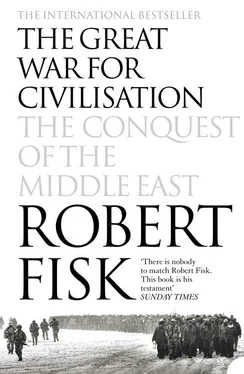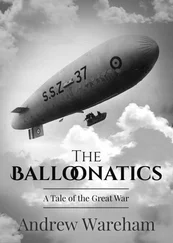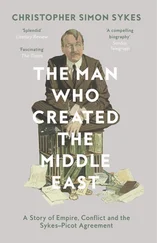Attapour was daily expecting his own arrest, but three days after we spoke his journalistic voice was silenced when Tehran’s two English-language newspapers announced that they were suspending publication. The Tehran Journal , for which Attapour wrote, gave economic reasons for its closure but for weeks revolutionary komitehs had been denouncing the paper as ‘anti-Islamic’. Most of the staff had received anonymous phone calls threatening their lives. Attapour’s parallel with the French revolution – so much at variance with Edward Mortimer’s enthusiasm – was not lost on the most dogmatic of Iran’s new regime. Dr Salamatian, a political aide at the foreign ministry, found an agreeable comparison. There were fewer executions in Iran than in the French or Russian revolutions, he said. When I pointed out to him that there were no firing squads at all after the 1974 Portuguese revolution, he snapped back at me: ‘But in Portugal they were only getting rid of Caetano – we have been overthrowing more than two thousand years of monarchy.’ This was a curious response, since the idea that Persia had lived under a seamless monarchy for 2,300 years was a figment of the Shah’s imagination, a myth propagated to justify his authoritarian rule.
That this rule was authoritarian was one of the few common denominators among those who supported the revolution, for the Left in Iran already realised that the clerics were installing themselves in power. ‘Why condemn us for hunting down the Shah’s murderers?’ Salamatian asked. ‘In the West, you kept the Nazi Rudolf Hess in prison in Germany. We regard the agents of Savak as Nazi-type criminals. You in the West put Nazis on trial. Why shouldn’t we put our Nazis on trial?’
And how could one argue with this when reporters like Derek Ive of the Associated Press had managed, very briefly, to look inside a Savak agent’s house just before the revolution was successful? He entered the building when a crowd stormed through the front door. ‘There was a fish-pond outside,’ he told me. ‘There were vases of flowers in the front hall. But downstairs there were cells. In each of them was a steel bed with straps and beneath it two domestic cookers. There were lowering devices on the bed frames so that the people strapped to them could be brought down onto the flames. In another cell, I found a machine with a contraption which held a human arm beneath a knife and next to it was a metal sheath into which a human hand could be fitted. At one end was a bacon slicer. They had been shaving off people’s hands.’ Ive found a pile of human arms in a corner and in a further cell he discovered pieces of a corpse floating in several inches of what appeared to be acid. Just before the Shah’s soldiers burst back into the rear of the building, he snatched some quick photographs of the torture apparatus.
After the revolution, we were able to meet some of the Shah’s top Savak agents. Sitting in Evin prison in their open-neck shirts, winter cardigans and corduroys, drawing nervously on American cigarettes, the eighteen prisoners looked nothing like the popular image of secret policemen. From the moment they were brought into the room – a dingy, rectangular office that doubled on occasions as a revolutionary court – these middle-aged, over-friendly men either smiled or just stared at us as government officials described them as criminals.
But they had disturbing and sometimes frightening stories to tell. Hassan Sana, the economic and security adviser to the deputy head of Savak, talked of British intelligence cooperation with the Shah, a friendly liaison which, he claimed, prompted British agents to pass to their Iranian counterparts information about Iranian students in Britain. Sana, a chainsmoker with dark glasses and an apparent passion for brightly coloured shirts, said that British assistance enabled Savak to watch or arrest students on their return to Tehran from London.
He spoke, too, of how Savak agents were flown from New York by the CIA for lessons in interrogation techniques at a secret American military base, a mysterious journey that took four hours flying across the United States in an aircraft with darkened windows. We had earlier toured the Savak interrogation centre in central Tehran, where former inmates described how they had been tortured. A black-tiled room with a concrete floor was all that remained of the chamber – almost identical to the one Ive had discovered – where prisoners were roasted on beds over gas burners. In Evin, for one terrible moment, Mohamed Sadafi – a Savak agent who had been a weightlifter – was confronted by a man whose daughter died in Sadafi’s personal custody.
‘You killed my daughter,’ the man shouted. ‘She was burned all over her flesh until she was paralysed. She was roasted.’ Sadafi glanced briefly at the man. ‘Your daughter hanged herself after seven months in custody,’ he replied quietly. The father said there was not even a sheet in the prison from which an inmate could hang herself. Yes there was, Sadafi said. He had himself seen the laundry bills at Evin.
Upon such horror the Shah’s regime was maintained, and upon such fearful scenes the revolution was fuelled. If there was a cause for surprise in Iran at this early stage of the new regime, it was not that the revolution had claimed so many victims among the Shah’s retinue but that it had claimed so few. But the revolution was unfinished. It was not going to end at that friendly bourgeois stage at which the Portuguese grew tired, nor was there any common ground between the new Islamic Republic and the people’s democracy that Iranian left-wing groups had been propagating. The Left was now more active – there were fire-fights in the streets every night – and the situation would only be exacerbated by Iran’s constantly worsening social conditions. Even Khomeini described the country as ‘a slum’. *
The security authorities of the new Islamic state remained convinced, however, that some in the new government regarded the United States as a potential partner rather than the ‘Great Satan’ of the street demonstrations.
And they were right. After the US embassy was seized in November 1979 by the ‘Muslim Students following the Line of the Imam’, Iranian security men found tons of shredded US diplomatic correspondencewhich they spent months reconstructing by laboriously pasting documents back together. The papers included an embarrassing quantity of material about Abbas Amir Entezam, the deputy prime minister, and his contacts with the US government. At first this was on a formal basis – the American embassy remained open after the revolution and US officials routinely met Iranian foreign ministry staff to arrange the repatriation of American military staff and civilians – and the embassy told Entezam in March 1979 that ‘the United States desires to normalize its relations with Iran at a steady pace’. Entezam replied, according to the documents, that ‘his government also wanted a good relationship with the United States … the prime minister, Bazargan … had recently expressed this sentiment publicly.’
Within a few days, however, Entezam was expressing his government’s desire to ‘share intelligence information with USG [US Government]’. The Americans had, incredibly, already given Entezam a ‘paper on Afghanistan’ – the Iranians were increasingly fearful that the Soviet Union might invade their eastern neighbour – but now Entezam explained that his government was more concerned about ‘internal security threats’. According to the US embassy report of a further meeting in May, Entezam said that ‘PGOI [Provisional Government of Iran] was concerned about possible meddling by Iraqis in Khuzestan province as well as activities of PLO and Libyans.’ Entezam said that ‘PGOI had information that George Habash [the leader of the Syrian-supported Popular Front for the Liberation of Palestine] had recently visited several Gulf countries … presumably with a view to causing trouble for Iran.’ The PLO’s office in the southern Iranian city of Ahwaz was also causing concern but ‘shaking his head, he [Entezam] said his government could do nothing about it … because it was Khomeini’s desire that it be opened.’
Читать дальше












